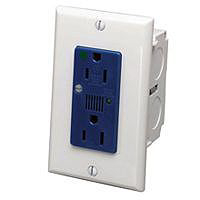ramsy
NoFixNoPay Electric
- Location
- LA basin, CA
- Occupation
- Service Electrician 2020 NEC
TDR's have pinpointed faults, while monitoring live cables carrying 60 Hz, for several years [6].. Its called Spread Spectrum Time Domain Reflectometry for Wire Fault Location.I do not see how you could use a TDR in place of an AFCI since they have to be monitoring "Real Time". (not all faults are continuous, some are intermittent).
IEEE published a nice SSTDR analysis, and designed an Application-Specific Integrated Circuit (ASIC), for live Arc fault mapping at 400 Hz. IEEE SENSORS JOURNAL, VOL. 5, NO. 6, DECEMBER 2005
The code panels could mandate future improvements: with the ASIC economy of scale demonstration of SSTDR's --noise & data tolerant-- AFCI, GFCI, Overload, & Bolted fault monitoring in one place, potentially reducing all circuit breakers to inexpensive relays.don_resqcapt19 said:The code rule tells us that we have to use the combination type


